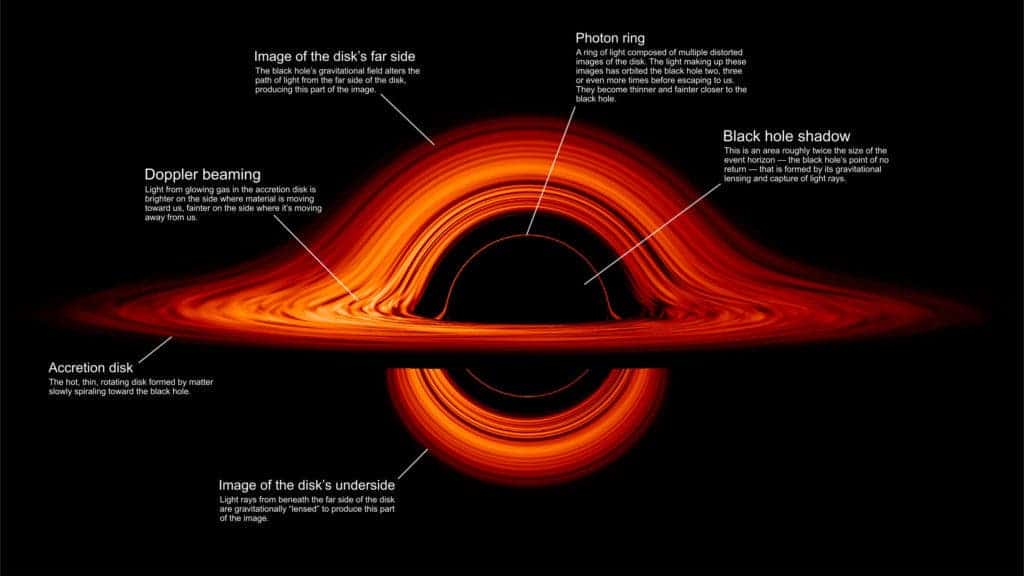A beautiful new animation produced by NASA helps visualize the relationship between gravity, time, and space.

Researchers at NASA’s Goddard Space Flight Center in Greenbelt, Maryland, have generated a new animation of a black hole and its surrounding matter disk. The animation is based on radio images of a black hole at the core of galaxy M87 taken by the Event Horizon Telescope.
Bendy time
“Simulations and movies like these really help us visualize what Einstein meant when he said that gravity warps the fabric of space and time,” says Jeremy Schnittman, Ph.D., the NASA astrophysicist who generated these gorgeous images using custom software
Schnittman’s work helps to showcase how the huge gravity around a black hole distorts the way we perceive its surroundings. That halo-like structure is, in fact, a disk. This accretion disk is a relatively thin mass of gas infalling into the black hole; we see it in the particular shape shown above because gravity is bending light around the black hole. It’s pretty similar to bending a picture of the disk.
Gas in accretion disks is very hot (through a combination of friction and compression), so it radiates in different parts of the electromagnetic spectrum. Those around the youngest of stars glow in infrared, but the disk in this animation glows with X-rays, because it has a lot of energy. It ripples and flows as magnetic fields move along its bulk. This creates brighter and dimmer bands in the disk.
The gas also moves faster the closer it gets to the black hole — close to the speed of light nearest to it. In the animation above, this makes the left side look brighter than the right side due to redshift.

The thin line of light that seemingly outlines the black hole is its “photon ring”. You’re actually looking at the underside of the disk, its image bent back to us by the massive gravitational pull there. What we see as the photon ring is made up of several layers that grow progressively thinner and dimmer — this is light that’s been bent several times around the black hole before escaping for our telescopes to capture. Schnittman’s model uses a spherical black hole, so here the photon ring looks identical from every angle.
“Until very recently, these visualizations were limited to our imagination and computer programs,” Schnittman says. “I never thought that it would be possible to see a real black hole.”









